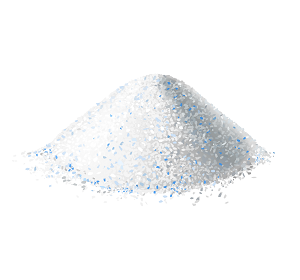Market Overview:
The Artificial Urinary Sphincter Implantation Device Market refers to the global market for medical devices designed to treat urinary incontinence by mimicking the function of a natural urinary sphincter. These devices are primarily used in patients with severe urinary incontinence due to prostate surgery, neurological conditions, or other factors.
The Artificial Urinary Sphincter Implantation Device Market has been witnessing significant growth due to the increasing prevalence of urinary incontinence, especially among the aging population. Technological advancements in medical devices, rising awareness about urinary incontinence treatment options, and improved healthcare infrastructure are key factors driving market expansion. Companies in this market are focusing on research and development to introduce more efficient and patient-friendly devices. The demand is also fueled by the growing acceptance of minimally invasive surgical procedures, which offer quicker recovery times and reduced hospital stays.
Geographically, North America holds a dominant share of the market, attributed to the high prevalence of urinary incontinence, advanced healthcare systems, and supportive reimbursement policies. However, emerging economies in Asia-Pacific are expected to exhibit the highest growth rates during the forecast period from 2024 to 2033. This is due to improving healthcare facilities, increasing disposable incomes, and greater awareness about urinary incontinence treatments. Regulatory changes and the need for cost-effective healthcare solutions are likely to influence market dynamics significantly. In conclusion, the Artificial Urinary Sphincter Implantation Device Market is poised for robust growth, driven by technological advancements and an increasing focus on improving patients’ quality of life.
Key Takeaways
Growing Demand:
The Artificial Urinary Sphincter (AUS) Implantation Device Market is experiencing significant growth, driven by the increasing prevalence of urinary incontinence, particularly among the elderly. As the global population ages, the demand for effective solutions to manage urinary incontinence is rising. This condition is often caused by factors such as prostate surgery, neurological disorders, and other medical conditions, making AUS devices crucial for improving patients’ quality of life.
Technological Advancements:
Continuous advancements in medical technology are propelling the market forward. Companies are investing heavily in research and development to create more efficient and patient-friendly AUS devices. Innovations such as improved materials, better control mechanisms, and minimally invasive surgical techniques are enhancing the effectiveness and safety of these devices. These advancements are not only improving patient outcomes but also making the devices more accessible to a broader range of patients.
Increasing Awareness and Acceptance:
Awareness about urinary incontinence and its treatment options is growing. Healthcare providers and organizations are educating patients about the benefits of AUS devices, leading to increased acceptance and adoption. Additionally, the stigma associated with urinary incontinence is gradually diminishing, encouraging more individuals to seek treatment. This shift in perception is positively impacting the market, as more people are willing to explore and opt for AUS implantation.
Regional Market Dynamics:
North America currently holds a dominant position in the AUS implantation device market, primarily due to the high prevalence of urinary incontinence and a well-established healthcare infrastructure. The presence of major market players and favorable reimbursement policies further contribute to the region’s market leadership. However, the Asia-Pacific region is expected to witness the highest growth rate during the forecast period from 2024 to 2033. Factors such as improving healthcare facilities, increasing disposable incomes, and greater awareness about urinary incontinence treatments are driving market expansion in this region.
Economic and Regulatory Factors:
Economic factors, such as rising healthcare costs and the need for cost-effective treatment options, are influencing the market dynamics. Governments and healthcare organizations are focusing on providing affordable healthcare solutions, which is expected to boost the demand for AUS devices. Regulatory changes and approvals also play a significant role in shaping the market. Stringent regulations ensure the safety and efficacy of medical devices, which builds trust among healthcare providers and patients.
Competitive Landscape:
The AUS implantation device market is highly competitive, with several key players striving to gain a competitive edge. Companies are focusing on strategic collaborations, mergers, and acquisitions to expand their market presence and enhance their product portfolios. Additionally, investments in marketing and awareness campaigns are helping companies reach a larger audience and increase their market share.
Future Outlook:
The future of the AUS implantation device market looks promising, with robust growth expected over the next decade. The combination of technological advancements, increasing awareness, and a growing elderly population is set to drive market expansion. Moreover, emerging economies are likely to offer significant growth opportunities, making it essential for companies to focus on these regions. In conclusion, the AUS implantation device market is poised for substantial growth, driven by a range of factors that are improving patient outcomes and enhancing the overall market landscape.
Component Analysis
Cuff:
The cuff is the primary component of the AUS device, encircling the urethra to control urine flow. It functions by inflating and deflating, which either restricts or allows urine passage. Advances in cuff materials, such as silicone and biocompatible polymers, have enhanced durability and reduced complications. Innovations in cuff design, including adjustable and pressure-regulated cuffs, are pivotal in improving patient outcomes and comfort.
Pump:
The pump is typically implanted in the scrotum for men or the labia for women, allowing patients to manually control the inflation and deflation of the cuff. Ergonomic designs and user-friendly interfaces are crucial for patient ease of use. The reliability and durability of the pump are essential, as malfunctions can lead to device failure and require surgical intervention. Recent developments focus on minimizing pump size while maximizing effectiveness.
Balloon Reservoir:
The balloon reservoir stores the fluid used to inflate the cuff. It is implanted in the abdominal cavity and is designed to maintain a stable volume and pressure. Technological advancements have led to the development of reservoirs with improved fluid dynamics, ensuring consistent pressure and reducing the risk of leakage. The material composition of the reservoir, typically medical-grade silicone, is critical for long-term biocompatibility and durability.
Tubing:
Tubing connects the cuff, pump, and balloon reservoir, allowing the fluid to move between these components. The tubing must be flexible yet sturdy enough to withstand repeated use. Innovations in tubing materials focus on enhancing flexibility while maintaining strength to prevent kinks and breaks. Additionally, ensuring that the connections between tubing and other components are secure is vital to prevent leaks.
Materials and Biocompatibility:
The materials used in AUS devices are paramount to their success. Biocompatible materials that minimize the risk of infection and rejection are continually being developed. Medical-grade silicone is commonly used due to its flexibility, durability, and low risk of adverse reactions. Ongoing research aims to identify new materials that can further improve the safety and longevity of AUS devices.
Market Features
- Technological Advancements:
- One of the primary drivers of the AUS Implantation Device Market is technological innovation. Modern AUS devices are becoming more reliable, durable, and easier to implant, which makes them a preferred choice for both patients and healthcare providers.
- Companies are investing heavily in research and development to introduce devices with improved features, such as better pressure regulation and enhanced patient comfort. These advancements not only improve the effectiveness of the devices but also reduce the risk of complications and the need for revision surgeries.
- Demographic Shifts:
- The aging global population is another significant factor contributing to market growth. As people age, the likelihood of developing conditions that lead to urinary incontinence, such as prostate surgery complications and neurological disorders, increases.
- This demographic trend creates a larger patient base requiring AUS implantation. Additionally, increased life expectancy means that more people will need long-term solutions for urinary incontinence, further boosting demand for AUS devices.
- Regional Healthcare Developments:
- The market for AUS devices is well-established in North America and Europe, where advanced healthcare infrastructure and favorable reimbursement policies make these devices more accessible to patients.
- In these regions, there is a high prevalence of urinary incontinence, coupled with a strong emphasis on improving the quality of life for patients with chronic conditions. Consequently, North America and Europe hold the largest market shares.However, the Asia-Pacific region is expected to see the fastest growth during the forecast period from 2024 to 2033.
- Challenges and Opportunities:
- Despite the positive outlook, the AUS Implantation Device Market faces certain challenges. High costs of the devices and implantation procedures can be a barrier for patients, especially in regions without comprehensive healthcare coverage.
- Additionally, the need for surgical expertise and postoperative care can limit the availability of these treatments in less developed areas.On the other hand, these challenges also present opportunities for market growth.
Drivers:
The primary driver for the Artificial Urinary Sphincter (AUS) Implantation Device Market is the increasing prevalence of urinary incontinence. This condition, which affects millions of people globally, is particularly common among older adults and those who have undergone prostate surgery. As the global population ages, the incidence of urinary incontinence is expected to rise, thereby increasing the demand for effective treatments such as AUS devices. Additionally, advancements in medical technology have significantly improved the design and functionality of AUS devices, making them more effective and easier to implant. This has led to increased adoption among healthcare providers and patients alike. Moreover, growing awareness about urinary incontinence and available treatment options is encouraging more patients to seek medical help, further driving market growth.
Trends:
Several key trends are shaping the AUS Implantation Device Market. One major trend is the development of minimally invasive surgical techniques for AUS implantation. These techniques reduce recovery times and minimize complications, making the procedure more attractive to patients. Another trend is the increasing focus on patient-centered care. Manufacturers are investing in research and development to create devices that offer greater comfort and usability. For instance, some new AUS devices feature improved pressure regulation and more user-friendly control mechanisms. Additionally, there is a growing trend towards the use of biocompatible materials that reduce the risk of infection and device rejection. The integration of digital health technologies, such as remote monitoring and data analytics, is also emerging as a trend, offering enhanced post-operative care and long-term device management.
Restraints:
Despite the positive market outlook, the AUS Implantation Device Market faces several restraints. The high cost of AUS devices and the associated surgical procedures can be a significant barrier for many patients, particularly in regions without comprehensive healthcare coverage. This can limit the market’s growth potential, especially in developing countries where healthcare budgets are constrained. Additionally, the implantation procedure requires specialized surgical expertise, which may not be readily available in all healthcare facilities. This can restrict access to AUS treatment in less developed areas. Moreover, there are potential risks and complications associated with AUS implantation, such as infection, device malfunction, and the need for revision surgery. These factors can deter some patients from opting for this treatment, thereby limiting market growth.
Opportunities:
Despite these challenges, there are several opportunities for growth in the AUS Implantation Device Market. One significant opportunity lies in the development of more affordable AUS devices and surgical procedures. This could make the treatment accessible to a broader patient population, particularly in developing countries. Additionally, increasing investments in healthcare infrastructure in emerging markets present opportunities for market expansion. Governments and private sector players are investing in improving healthcare facilities and training healthcare professionals, which can enhance the availability and quality of AUS implantation procedures. Another opportunity lies in the growing focus on personalized medicine. Advances in medical technology and data analytics are enabling the development of customized AUS devices tailored to individual patient needs, which can improve treatment outcomes and patient satisfaction. Furthermore, the integration of digital health technologies offers opportunities for improving post-operative care and long-term device management. Remote monitoring and data analytics can help healthcare providers track patient outcomes and intervene promptly in case of any issues, thereby enhancing the overall effectiveness of AUS treatment.
key players analysis
The Artificial Urinary Sphincter Implantation Device Market features several key players driving innovation and market growth. Home Instead Inc. and Amedisys Inc. are notable for their extensive home healthcare services, providing valuable support for post-operative care. Their involvement ensures better patient outcomes and adherence to treatment protocols.Kindred Healthcare LLC, known for its comprehensive healthcare services, plays a crucial role in offering AUS implantation procedures within its network of hospitals and clinics. Seymour Health focuses on advanced medical technologies, contributing to the development and distribution of cutting-edge AUS devices.SENIOR CARE CENTERS OF AMERICA INC emphasizes the importance of specialized care for the elderly, a key demographic for AUS devices, ensuring their facilities are equipped to manage post-implantation care. Other key players in the market are also making significant strides by investing in research and development to introduce more efficient and patient-friendly AUS devices.
Home Instead Inc.
Amedisys Inc.
Kindred Healthcare LLC
Seymour Health
SENIOR CARE CENTERS OF AMERICA INC
Other Key Players
If You Have Any Questions About This Report, Please Reach Out to Us https://medicalmarketreport.com/report/global-artificial-urinary-sphincter-implantation-device-market/#inquiry
Conclusion:
The Artificial Urinary Sphincter (AUS) Implantation Device Market is poised for significant growth, driven by increasing demand for effective urinary incontinence treatments. The aging population, particularly in developed regions like North America and Europe, continues to be a major factor in the rising prevalence of conditions that necessitate AUS implantation. Technological advancements in device design and surgical techniques have made AUS implantation a more viable and attractive option for both patients and healthcare providers. These advancements not only enhance the efficacy and safety of the devices but also improve patient comfort and satisfaction.Key players in the market, such as Home Instead Inc., Amedisys Inc., Kindred Healthcare LLC, Seymour Health, and SENIOR CARE CENTERS OF AMERICA INC., are instrumental in driving market growth. Their focus on patient care, innovative solutions, and extensive healthcare services ensures that patients receive comprehensive support before, during, and after AUS implantation. The involvement of these players in post-operative care and patient education significantly enhances treatment outcomes and adherence to prescribed protocols.
contact us
Market.us (Powered By Prudour Pvt. Ltd.)
Address: 420 Lexington Avenue, Suite 300,
New York City, NY 10170, United States
Tel: +1 718 618 4351
Email: [email protected]



